The coding languages to know if you want to bag the best Credit Risk & Analytics roles
Our Credit Risk & Analytics recruitment experts have noticed a distinct shift in the skill sets that employers are looking for in recent times, so we took to LinkedIn to ask the professionals:
-
37% of respondents to our poll said they use SAS most in their day-to-day role
-
This means that the majority (63%) of workers in the Credit Risk & Analytics space now favour alternative programming languages
-
SAS still seems to be the favourite programming language but how long will this last as we see that the use of SQL, R and Python is on the rise?
Let’s dig deeper…
As National Coding Week (Sep 13th – 19th) again aims to help adults and children with learning digital skills, we wanted to answer a pressing question, is SAS still the most required skill in the Credit Risk & Analytics world?
Eleanore Sykes, Managing Consultant in Credit Risk & Analytics, has been recruiting in this space for over 15 years now.
“I have placed candidates across all levels of the Credit Risk spectrum, within banks, building societies, fintechs, collections businesses, consultancies and more. It used to be all about SAS. Every hands-on job description would specify SAS as an absolute must have, but this has all changed in recent years.
“The rise of data science, stricter budgets for analytics functions, continuous technological advancements and many more developments have allowed some other contenders to come to the fore and we’re seeing much more demand for the likes of SQL, R and Python.”
To discover the answer to our question, we engaged with our extensive network of Credit Risk professionals on LinkedIn and asked, “What programming language do you use most in your day-to-day role?”.
Of over 2000 respondents comprised of Data Scientists, Credit Risk Specialists, Chief Risk Officers and more, a decisive 63% selected either Python, SQL or R, giving us the hard evidence to say that SAS no longer has a monopoly on the market.
With SAS taking 37% of the vote we can see that it is still a major player in the programming language competition, which is understandable after reading one commenters point that “SAS has built over 650 solutions of which credit risk is one. The credit risk solution happens to be one of the market leading ones which is most likely why many organisations trust SAS in that space.”
However, it’s also clear that businesses are diversifying their investments in their Credit Risk functions and candidates on the lookout for a new role need to keep up. One data professional let us know that they have worked with a variety of languages throughout their career, showing that candidates should no longer rely on having programming abilities with just one language.
“I’ve mainly worked in SAS shops followed by Python and then R, but across all positions, SQL has been the universal language.”
It appears that SAS remains the main tool that larger and more traditional organisations use across their Credit Risk & Analytics functions, possibly due to the longstanding investments these firms have undertaken to secure SAS licenses, making it more of a challenge to move away from. However, the start-ups, fintechs and more forward-thinking businesses of today are not tied to historic methods and often have a blank sheet and free reign to explore other options.
In particular, more cost-effective contenders are creeping through the doors, resulting in a rise in demand for SQL, Python and R, which are ideal for start-ups and smaller, more scalable firms. As one of our respondents observed,
“I think it’s mostly to do with which software is being taught in university undergraduate courses and, given that both R and Python are open source, this means that universities are more interested in using these.”
What is clear is that the Credit Risk & Analytics arena, alongside many other industries, is on an eternal path of digital transformation and individuals looking to pursue a successful career in this space need to stay up to date with a multitude of programming languages and other tools.
A number of respondents suggested that having knowledge of a mixture of languages is most beneficial,
“I think it’s good to know all three [SAS, R and Python]. It gives you flexibility. SAS Viya links it all together which is useful.”
Particularly because different business requirements and tasks require different approaches,
“I remember working in a bank, having a full SAS license and almost 10 years of experience coding in SAS and still choosing to use R because it was much better suited to my more complex tasks.”
A few other tools were mentioned as well, including Matlab, GIT and Excel VBA, but we’re confident in concluding from our research that Credit Risk & Analytics professionals should stay abreast of a variety of programming languages should they want to be most desirable to potential employers.
Many businesses offer internal training and funding for courses, but there are plenty of options for those who wish to upskill in their own time, a few of which we’ve compiled below. Take a look at our previous article for more about sharpening your overall Credit Risk & Analytics skills.
-
Codecademy is an online code teaching website where people can learn HTML, CSS, Javascript, jQuery, Python, Ruby and PHP.
-
Coursera comprises of computer science courses which are frequently updated and new languages added.
-
Learn Python the Hard Way is aimed at beginners and is a book which also has tutorial videos to accompany each exercise.
-
Code School offers different paths that users can follow to build specific skills. Most of the basic level courses are free but people need to enrol in a no-contract subscription.
-
SQLZoo is the go-to online resource for learning everything SQL. From SQLZoo, you can learn about SQL server, Oracle, MySQL, DB2, and PostgresQL via interactive tutorials and assessments.
If you’re looking for a candidate with top notch coding skills or the next step in your career, then look no further than MERJE. Find out more about our Credit Risk & Analytics expertise here.
If you’d like to discuss this, or any of the topics covered in our articles, please get in touch.







